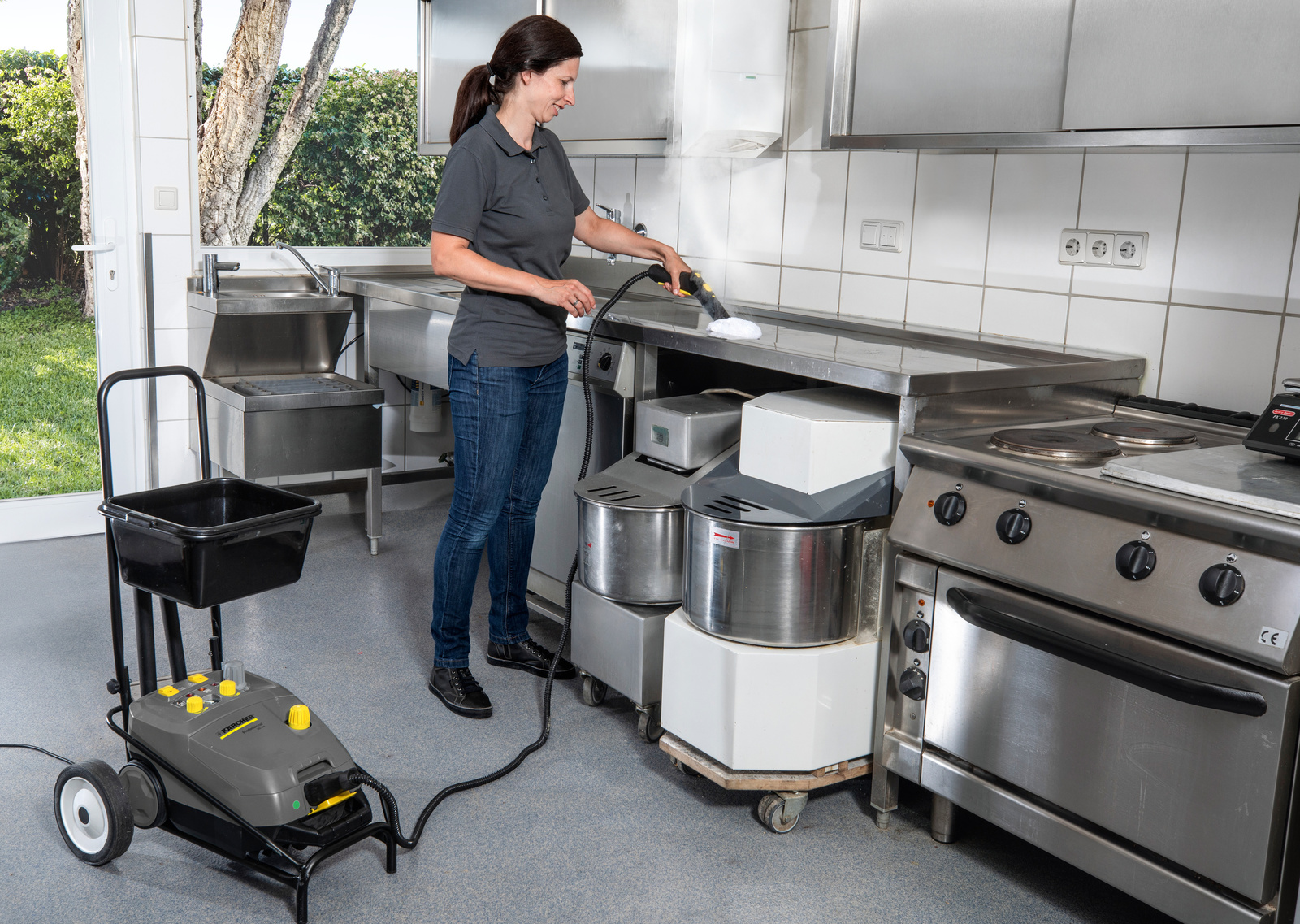How schools and daycare centres can ensure hygiene
Not only in times of a pandemic, but daycare centres and often also schools are generally considered places which give rise to the spread of pathogens. The spread of viruses and bacteria can be tackled effectively when an appropriate hygiene concept is developed for the respective facility.

Cleanliness provides protection
In order to effectively clean communal spaces, including schools and child care facilities a hygiene concept makes a big difference. It includes many factors, from the ventilation of the rooms to the reduction of groups through to compliance with social distancing guidelines or the wearing of masks or face coverings. Another important factor is the introduction of effective cleaning sequences – because cleanliness can only provide protection against disease when the process begins at the relevant points.
Step 1:
Take time to prepare a risk analysis
SARS-CoV-2 is the pathogen that currently poses unforeseen challenges to all care and educational facilities for children and young people – but the topic of hygiene has ranked highly well before the onset of corona. If you currently find yourself in the specific situation of having to reopen a facility following a closure due to infection control, a risk analysis for all rooms must be conducted beforehand. How can the spread of germs by children and adults be prevented, where are the weaknesses, which cleaning measures ensure cleanliness and hygiene? Can optical aspects such as the removal of sand from the floor or dust from the cabinet be sacrificed in the event of capacity shortfalls in order to complete hygiene-related work?
If consistent answers are found to these questions and integrated in a hygiene concept, then the new tasks should be explained to the cleaning staff in detail. This is the only way to ensure the tasks can be reliably completed. The steps can be visually depicted per room in a language-neutral manner, thus making things even simpler. For example, it can be marked in colour on a 2D or 3D drawing where must be disinfected and where dust-binding or wet wiping must be carried out. If such work instructions are hung in a visible location in the respective room, then the cleaning staff has clarity about their tasks, and trust can be created among employees and parents.
Step 2:
Conscientious implementation of hygiene concept
Although the measures must be adapted to the respective rooms, there are some aspects which must be considered overall. Deep cleaning using the appropriate methods and machines lowers the risk of a spread of viruses by over 90 percent. Therefore, before the reopening the entire facility should be thoroughly cleaned. Close attention must be paid to every single detail. For example, all taps and drains must be rinsed so that stagnant water does not present a risk of infection.
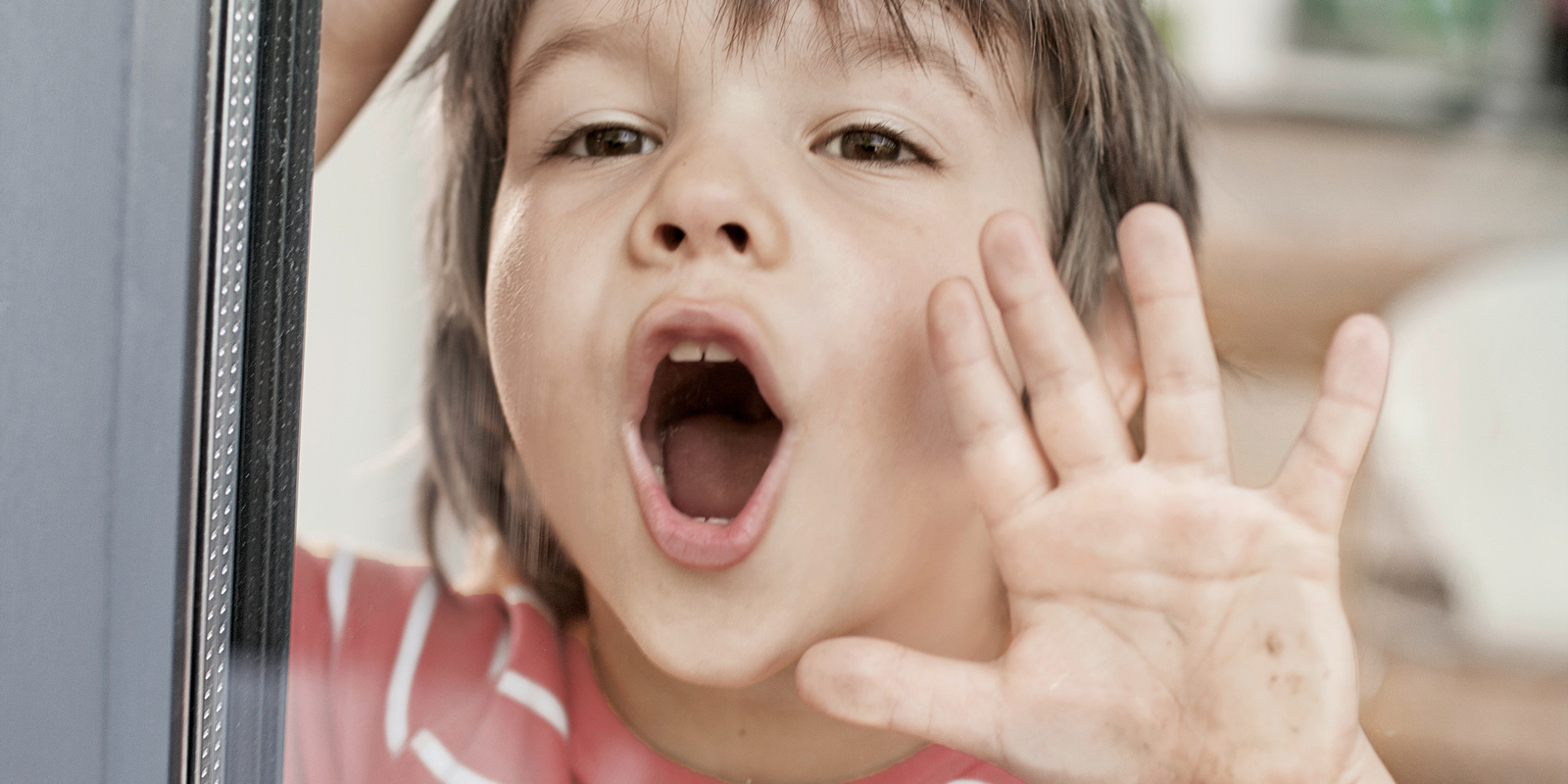
After the opening it is about implementing the defined cleaning measures at a suitable interval during operations. In the specific case of a pandemic, surfaces with frequent hand/skin contact play an even more important role in normal day-to-day life. In facilities which look after small children objects not only end up in children's hands, but often also in their mouths. Therefore, it is recommended to disinfect light switches, door handles, group cloakrooms, windows that are accessible to children, toys and other relevant surfaces at least once a day. Especially around small children, products should be used which do not leave residues on the surfaces – for example, alcohol dries without leaving any residue, peroxide decays. In schools it is necessary not to forget the areas for adults – for example, the kitchen with frequently touched operating elements on coffee machines, fridge or dishwasher.
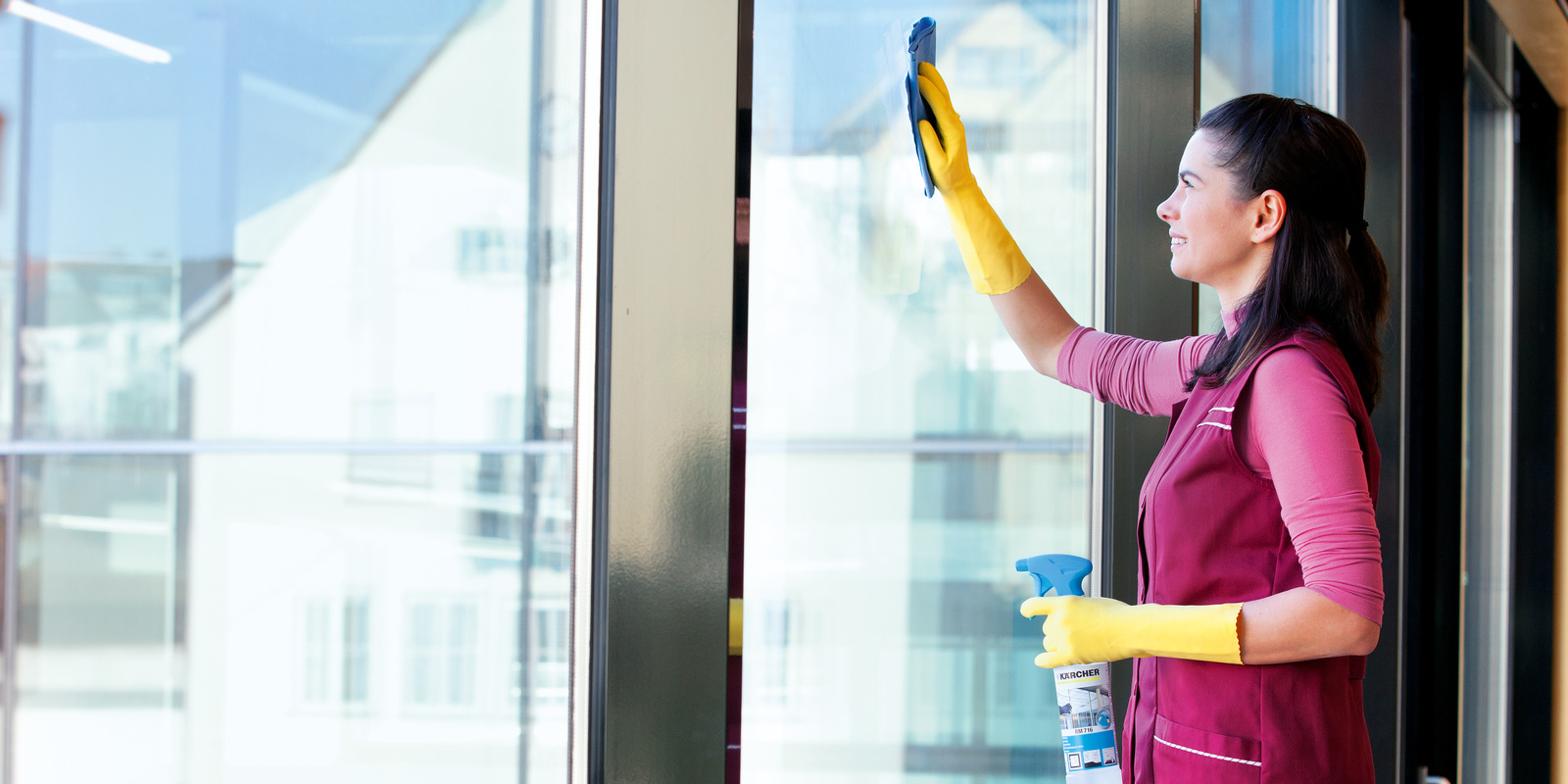
It is best to use microfibre cloths and spray bottles with disinfectant cleaner for manual surface cleaning. Two methods can assist in the work. The colour method defines that, for example, blue cloths are used for surfaces and red cloths are used for toilets. This avoids any mix-up. With the 8-fold or 16-fold method it can also be ensured that surfaces are always cleaned with a clean side of the cloth and germs are not carried over from one room to the next. A microfibre cloth is folded down once and, depending on the size, folded once or twice to the side. Then a clean side of the cloth is sprayed with disinfectant cleaner and the surface is wiped. Through systematic unfolding the cloth can be used to clean eight or sixteen areas before a new cloth has to be used.
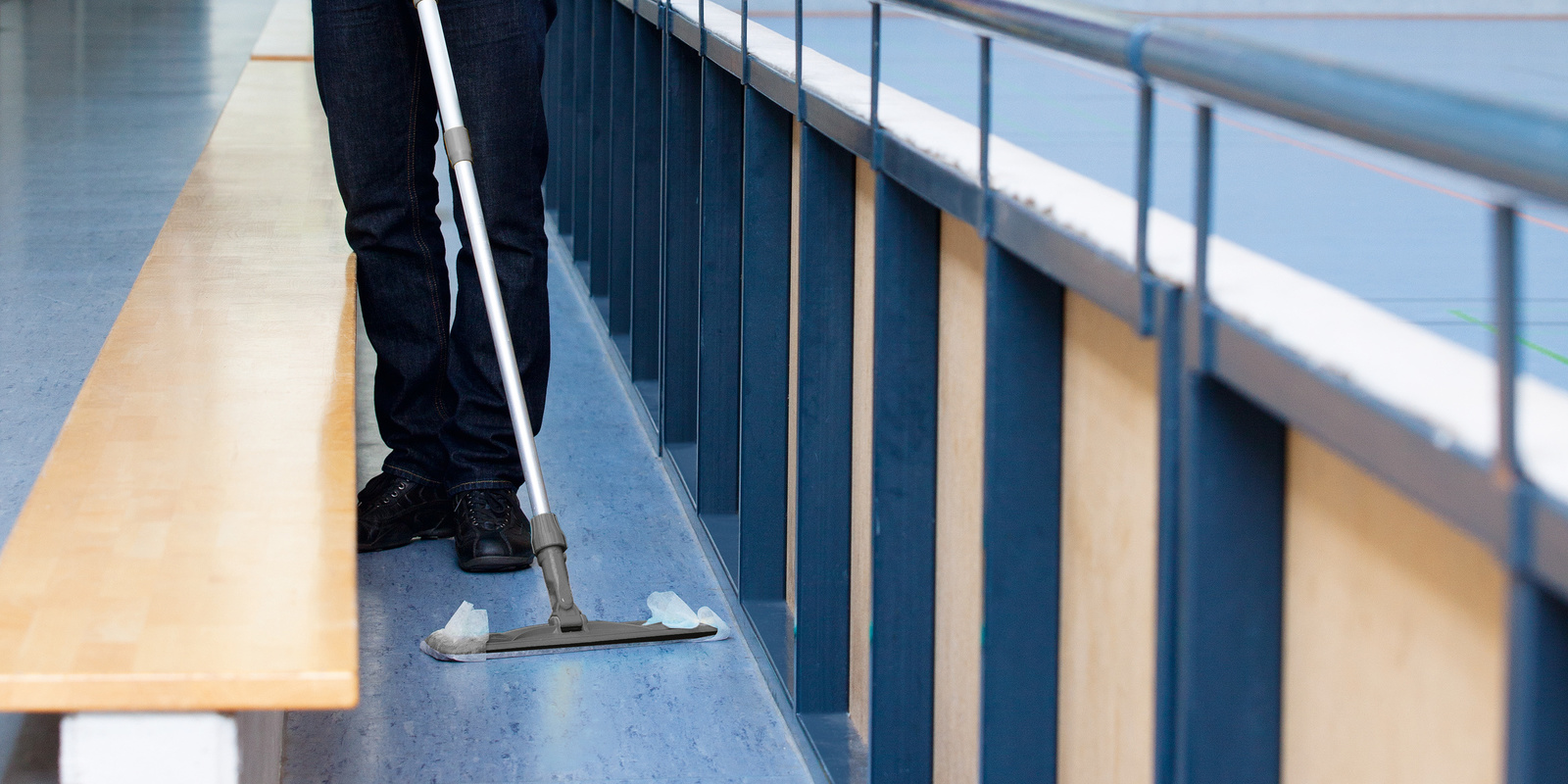
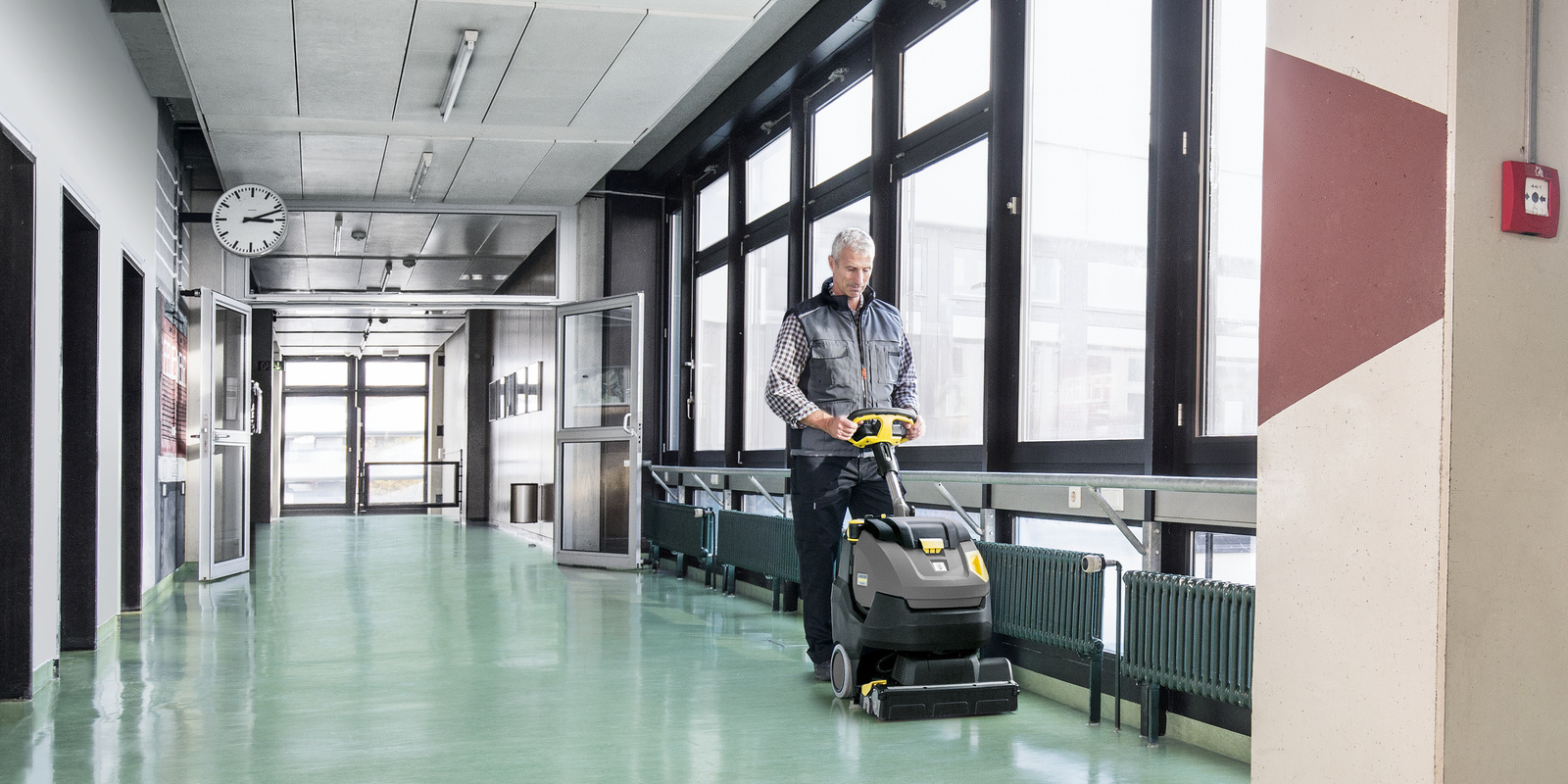
For the daily dry cleaning of floors vacuum cleaners, which have a HEPA filter and can therefore pick up and retain microorganisms, are perfect. The area can also be manually wiped in order to pick up loose dirt from the floor. For the weekly wet cleaning under no circumstances should the bucket method be used in the case of an acute threat of pathogens as the risk of cross-contamination is particularly high. Instead, microfibre mop covers can be used, which depending on the size of the area have already been soaked in disinfectant cleaner or cleaning agent beforehand. One cloth is used per room in order to minimise the risk of cross-contamination during the floor cleaning. In terms of sustainability, reusable cloths should be used which must undergo chemo-thermal or thermal disinfection following the cleaning process, i.e. be washed at a temperature of at least 60°C or 95°C. if this is not possible, then it is best to use disposable cloths for safety.
Large areas, e.g. sports halls, canteens or long corridors in large schools, can be cleaned efficiently and comfortably with scrubber driers. They vacuum the dirt immediately and are therefore very hygienic.
Step 3:
Check and improve
A small daycare centre can also set up a simple quality management system in order to check the effectiveness of the hygiene concept. A simple measure is the maintenance of a cleaning protocol, which records when which work was completed and which tasks could not be performed. It can also be checked whether the cleaning objective was attained. With an ATP test, for example, it can be determined whether the surface corresponds to the desired hygiene standard. The test measures the amount of adenosine triphosphate, which is left by people, animals and other living beings.
If it is revealed that surfaces are not thoroughly or adequately cleaned due to time constraints, then the hygiene concept can be optimised. The floors in playrooms and sports halls, for example, must be cleaned. Whereas the floors in the sanitary facilities or in the entrance area are not hygiene critical as they only come into contact with shoes. It is necessary to disinfect windows that are touched – whereas the extensive cleaning of windows and glass fronts on buildings can be delayed. This way the concept can be adapted to the actual conditions and resources step by step in the daily routine in order to create cleanliness and safety for everyone.
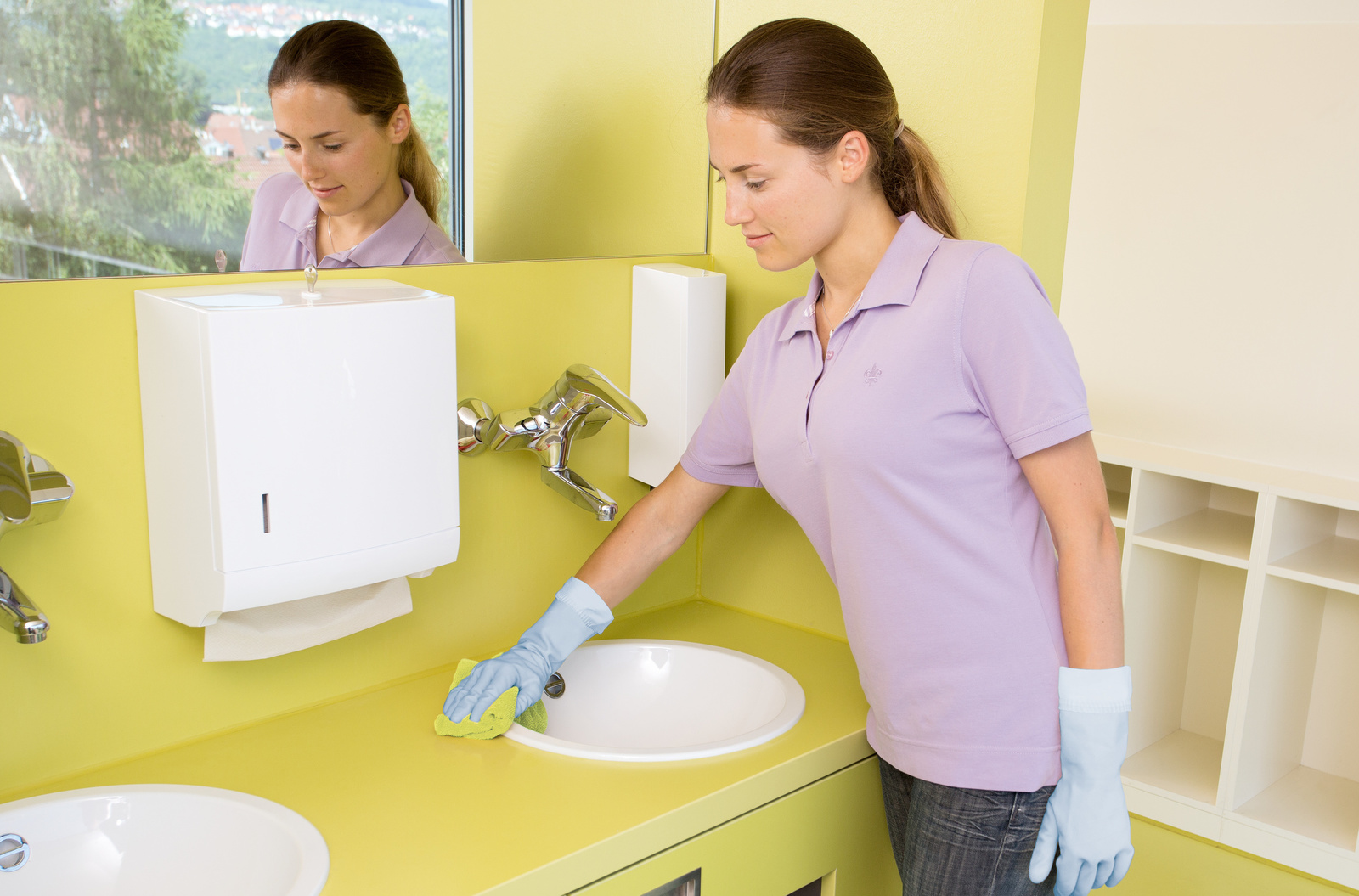
What if...?
Reopening after an outbreak
If a facility is confronted with an outbreak, it has been shown that carriers of a pathogen such as SARS-CoV-2 were in the building. In this case the hygiene measures must be intensified. If disinfection in a single step was sufficient on a normal day, then now the area must be cleaned in the first step, then disinfected in the second step.. Using chemicals a wipe disinfection can be carried out. This serves to reduce the germs on surfaces (disinfection) and is a form of surface disinfection, where the disinfectant is distributed using suitable cleaning utensils by wiping. Machines can help when cleaning floors. A spray mist is only permitted if users are equipped with the necessary PPE (personal protection equipment). When spraying disinfectants a protective mask is also required in addition to the normal equipment with work clothes and gloves. After the spray mist the room must be properly ventilated and cordoned off to the public for a sufficient amount of time.
Anyone who would prefer not to use chemicals can work in indoor spaces using professional steam cleaners. Enveloped viruses such as the coronavirus SARS-CoV-2 can be neutralised, i.e. deactivated, with high temperatures. Important for the application: The hot water steam emerges at around 100 °C and is cooled down with increasing distance. In order to combat viruses effectively, the nozzle must therefore be guided directly over the surface. It is also important to ensure a sufficient cleaning duration and to choose a steaming duration of 30 seconds on one area with the maximum steam stage. In the outside area hot water high-pressure cleaners with steam stage can be used.

